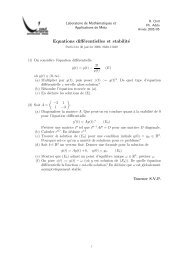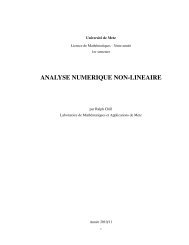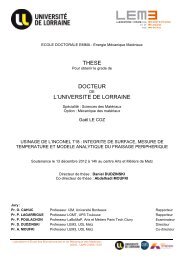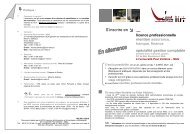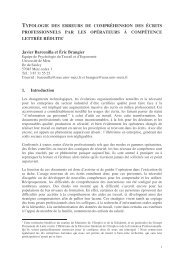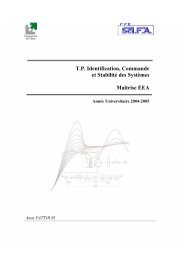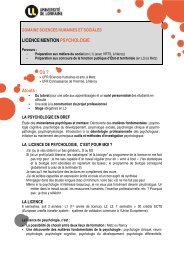Hohe und niedere Literatur. Tendenzen zu Ausgrenzung ...
Hohe und niedere Literatur. Tendenzen zu Ausgrenzung ...
Hohe und niedere Literatur. Tendenzen zu Ausgrenzung ...
Erfolgreiche ePaper selbst erstellen
Machen Sie aus Ihren PDF Publikationen ein blätterbares Flipbook mit unserer einzigartigen Google optimierten e-Paper Software.
Dr. Caroline Olsson, Paris (Frankreich)High versus low fiction within the Scandinavian historical genreIt is not always easy to tell literary works of fiction from those regarded as mass-market or subgenericnovels. The difference can sometimes be quite subtle. Several classical authors haveproduced juvenilia belonging to popular genres. In their early years, Victor Hugo, Alexandre Dumasand Honoré de Balzac, for example, wrote fantasy and horror novels, sometimes <strong>und</strong>er a penname.When it comes to a genre such as the historical novel, it becomes especially difficult trying todistinguish “respectable” literature from popular productions. Since its origins in the beginning ofthe nineteenth century, the historical genre has indeed been closely linked to entertaining narrativesand adventure stories, traditionally rated as lowbrow fiction. Nowadays, it can still be hard toclassify Walter Scott’s novels. Sometimes, the reading public associates them with British classicsand sometimes with children’s literature.We would like to explore the bo<strong>und</strong>ary between those historical novels that can be considered eliteand “low” ones. Needless to say, the borderline often appears to be both thin and subjective, notseldom drawn in an arbitrary way. We shall examine a few Scandinavian novels, mostly Swedish,set in the Viking era and the Middle Ages. Many similarities appear when we compare Röde Ormby Frans G. Bengtsson (The Long Ships in English, Die rote Schlange or Die Abenteuer des RödeOrm in German), published between 1941 and 1945, and Gerpla (The Happy Warriors, Dieglücklichen Krieger), published in 1952 by the Icelander Halldór Kiljan Laxness. Both writers havechosen to draw greatly on medieval sources and they treat the ancient material more or less in thesame way: they look upon the Viking ancestor with humour and sarcasm. Despite these obviouspoints of likeness, Bengtsson’s book is often classed as light reading and has even been described asa teen novel, whereas Laxness’ literary talent was acknowledged by the Swedish Academy in 1955,when he received the Nobel Prize. We shall try to <strong>und</strong>erstand why these books have been receivedso differently, since it doesn’t seem linked either to the period in which the plot takes place or to thehumoristic style. In the second part of our survey, we wish to examine two Swedish novels, set inthe thirteenth century: Bjälboarvet by Verner von Heidenstam (The Bellbo Heritage, Die Erben vonBjälbo), published in 1907, and Arvet efter Arn by Jan Guillou ([The Heritage of Arn; not yettranslated into English], Das Erbe), issued in 2001. They deal with the struggle for power of BirgerJarl and his two sons, Valdemar and Magnus III (known as Magnus Ladulås in Sweden, which







